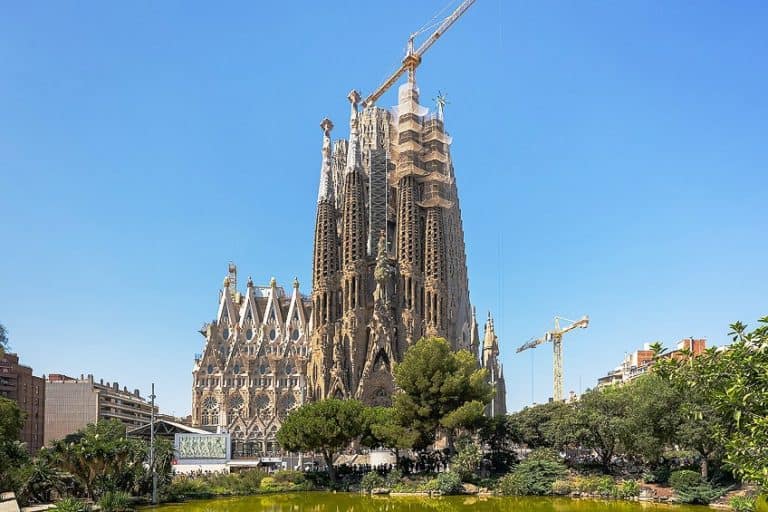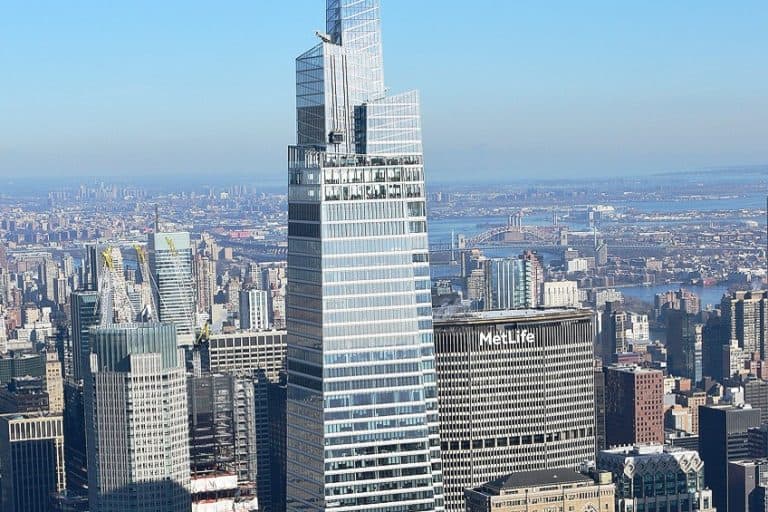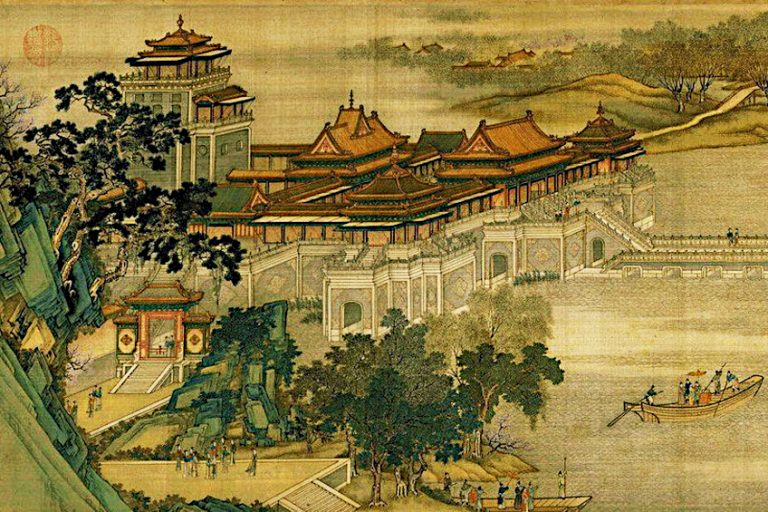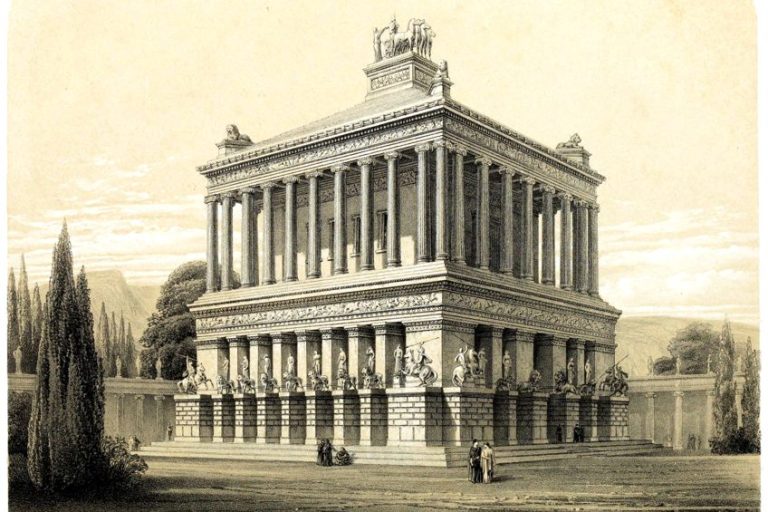Famous Buildings – Looking at the World’s Most Iconic Buildings
When it pertains to studying a new location’s history, visitors need not go any further than observing its famous buildings. Obviously, there are other methods to learn about the native culture, which may be found in fabrics, food, and languages. Yet, its famous architecture can disclose the most about a region. Today we will discover examples of the most significant architecture that exists today by listing the most famous buildings in the world.
Our List of the Most Famous Buildings in the World
These famous structures are renowned for many specific reasons, such as architectural aesthetic, historical importance, and a decent mix of both. Let us now compile a list of iconic buildings from across the globe that you’ll be pleased you saw when you reflect back on your journey.
These examples of famous architecture are, essentially, passive witnesses to former ages, empires, and preferences, but they may also provide us with hints about what the future will bring.
Hagia Sophia (Istanbul, Turkey)
| Date Completed | 537 AD |
| Function | Mosque |
| Architect | Isidore of Miletus (442 AD – 537 AD) |
| Location | Istanbul, Turkey |
The Hagia Sophia is a magnificent architectural work and an important landmark for both the Byzantine and Ottoman Empires. The Hagia Sophia, first a Christian church, then a mosque for Muslims, and then finally a museum, has always been a treasure of its era. For millennia, the magical city of Istanbul has hosted several civilizations. The city now has the traits of two different cultures, and the Hagia Sophia is unquestionably a wonderful blend, with both Ottoman and Byzantine impacts visible beneath one vast dome.
It has become one of the world’s most important cultural and architectural landmarks, drawing not only visitors but also academics, engineers, painters, and archaeologists. The edifice was built for devotion, and it has served that role for centuries.
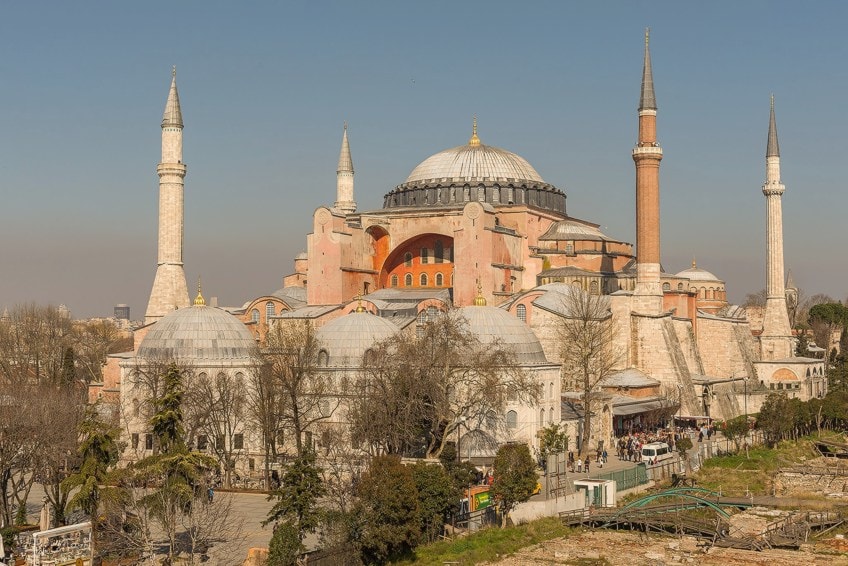
Mosque of Córdoba (Córdoba, Spain)
| Date Completed | 988 AD |
| Function | Cathderal |
| Architect | Hernán Ruiz the Younger (1514 – 1569) |
| Location | Córdoba, Spain |
The structures on this site are as intricate as the extraordinary history they depict. Historians think that this location was formerly home to a temple dedicated to the Roman deity Janus. Invading Visigoths transformed the temple into a church.
The chapel was later transformed into a mosque before being totally reconstructed by the successors of the exiled Umayyads—the earliest Islamic dynasty to reign from Damascus.
Prince Abd al-Rahman I sought refuge in southern Spain. Once there, he took control of nearly the whole Peninsula and strove to duplicate Damascus’ magnificence in his new capital, Córdoba. He funded complex construction projects, supported agriculture, and even brought fruit trees and shrubs from his previous residence.

Dome of the Rock (Jerusalem, Israel)
| Date Completed | 1023 |
| Function | Shrine |
| Architect | Raja ibn Haywa (660 AD – 730 AD) |
| Location | Jerusalem, Israel |
The Dome of the Rock is a structure of outstanding beauty, stability, elegance, and form distinctiveness. Outside and inside, the décor is so exquisite and the craftsmanship so exceptional that it is beyond description. The majority of it is covered with gold so that anybody who looks at it is stunned by its beauty.
This is one of the earliest surviving Islamic structures.
This magnificent structure is not a mosque, as is widely supposed, and researchers continue to argue its original role and meaning. A big rock in the middle of the Dome of the Rock is thought to be the spot where Abraham was ready to sacrifice his son Ismail. There are no animal or human figures in the building’s mosaics.
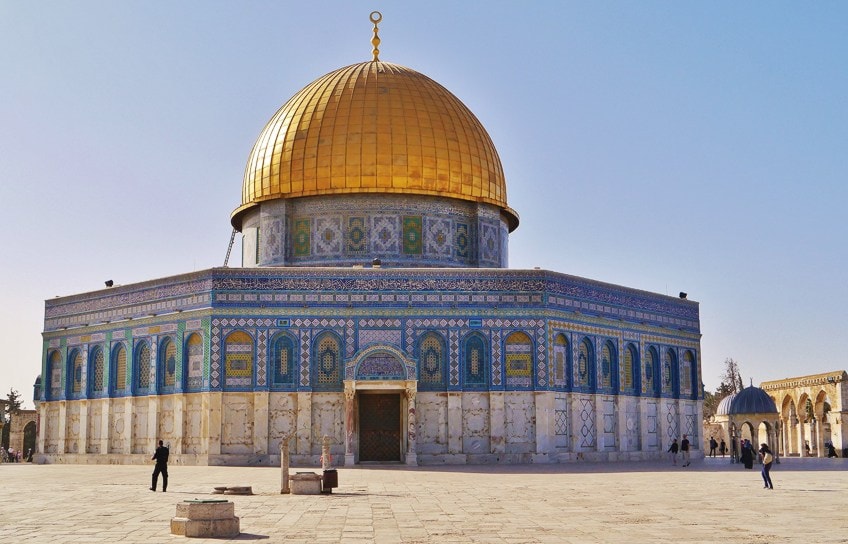
Château de Chenonceau (Chenonceaux, France)
| Date Completed | 1513 |
| Function | Château |
| Architect | Philibert de l’Orme (1514 – 1570) |
| Location | Chenonceaux, France |
The estate first appears in writing in the 11th century. The present château was erected on the foundations of an earlier mill in 1513 and later enlarged to bridge the river. The building’s grounds, which are a blend of late Gothic and early Renaissance architecture, are available to the public. It is France’s most visited château aside from the Royal Palace of Versailles. In World War I, the gallery was converted into a hospital. It was also a way to escape from the zone occupied by Nazis on one bank of the Cher River to the safe zone on the other.
While touring the luxuriously decorated apartments, visitors listen to iPods that describe important occurrences from French history.
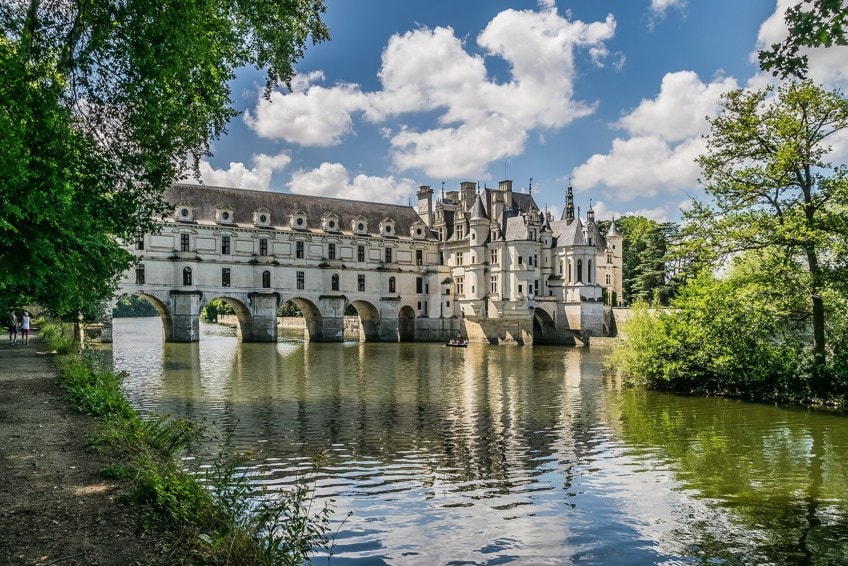
St. Basil’s Cathedral (Moscow, Russia)
| Date Completed | 1561 |
| Function | Cathedral |
| Architect | Postnik Yakovlev (birth and death unknown) |
| Location | Moscow, Russia |
According to legend, the cathedral’s constructor was blinded after completion so that an edifice of such grandeur could never be created again. The multicolored domes and brilliant redbrick towers contribute to its distinguishing look. The domes are part of nine distinct chapels inside the cathedral, and each dome represents the attack on Kazan.
The cathedral’s architecture is inspired by Jerusalem architectural styles and has deep religious significance.
When viewed from above, the eight domes that surround the ninth sphere in a circular pattern appear to resemble a star. The inside of St Basil’s Cathedral is very different from its appearance, with modest decorations and tiny passageways. Several times during its history, the cathedral has been damaged by fires, theft, and other occurrences.

Taj Mahal (Agra, India)
| Date Completed | 1643 |
| Function | Tomb |
| Architect | Ustad Ahmad Lahauri (1580 -1649) |
| Location | Agra, India |
The geometry, structural grandeur, exquisite calligraphy, inlaid diamonds, and gorgeous landscaping of this remarkable monument surprise visitors. The Taj Mahal was more than just a memorial to a marriage; it was Shan Jahan’s declaration of undying love to his late sweetheart. In his grief, Shah Jahan channeled his emotions into building an ornate and expensive mausoleum that would shame all others that came before it. It was also significant as the first large mausoleum dedicated to a woman.
Although there is no known main architect for the Taj Mahal, it is believed that Shah Jahan, who was passionate about design himself, worked on the plans directly.
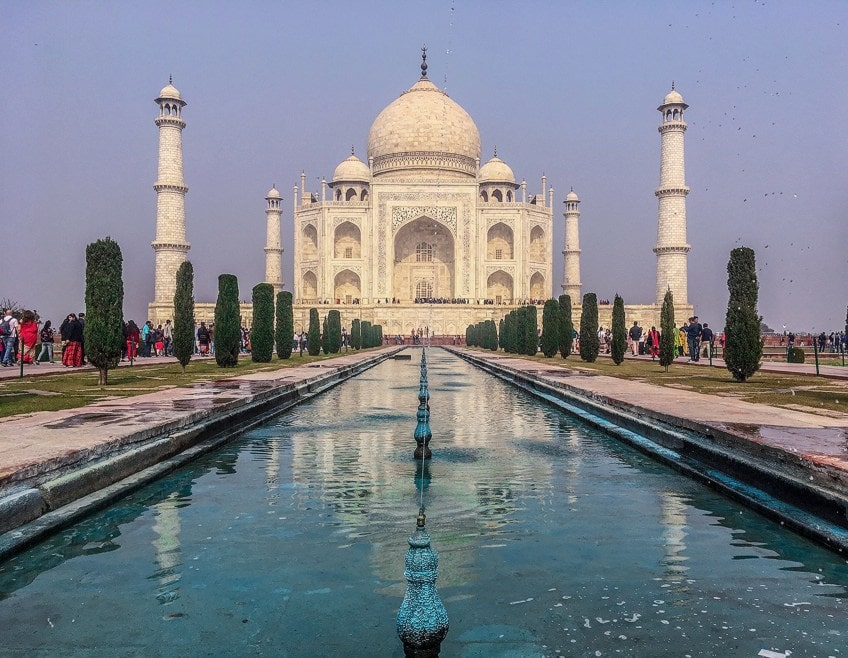
Château Frontenac (Quebec, Canada)
| Date Completed | 1893 |
| Function | Hotel |
| Architect | Bruce Price (1845 – 1903) |
| Location | Quebec, Canada |
The railway society’s directors wanted to promote luxury tourism and believed that this elegant hotel would entice affluent guests to board their trains. Several changes occurred over the 20th century that altered the château’s original appearance. The erection of the central tower in 1926 was perhaps the most significant. In June 1993, the Wing with its inside swimming pool and fitness center, as well as a stunning external terrace, was launched. Many luminaries have graced the famed hotel with their patronage, and the Château Frontenac has hosted a number of notable events.
The hotel is named after Louis de Buade, a pivotal character in New France history.

Casa Milà (Barcelona, Spain)
| Date Completed | 1912 |
| Function | Residence |
| Architect | Antoni Gaudí (1852 – 1926) |
| Location | Barcelona, Spain |
Antoni Gaudí, the architect, was a practical man and a craftsman at heart. In his job, he followed his instincts and made imaginative dreams a reality. His willingness to embrace new designs, paired with a brilliant imagination, helped shape new architectural types and, as a result, pushed the limits of the building. He is now considered a forefather of contemporary architecture. The name of the structure alludes to its unusual rough-hewn look. It was contentious at the time because of its undulating stone exterior and twisting wrought-iron balconies.
Gaudí was heavily chastised for the building’s disregard for established style guidelines. To begin with, the term is a moniker given by locals who objected to its unusualness.

Sacré-Coeur (Paris, France)
| Date Completed | 1919 |
| Function | Basilica |
| Architect | Paul Abadie (1812 – 1884) |
| Location | Paris, France |
Montmartre has been a center of prayer from the beginning of time. Because it is reported in the biography narrative of Saint Geneviève recorded by one of her colleagues in 475 that she pushed the citizens of Paris to erect a chapel on the place where he was martyred, this first Bishop of Paris entered the annals of history owing to her. Saint-Denis, the first Bishop and Martyr of Paris, and his legend depict this age in which Christ’s disciples prevailed “not by battling, but by dying.”
The first church dedicated to Saint-Denis on the mound was destroyed in the 9th century. It was later reconstructed since the hill of Montmartre was a renowned pilgrimage site.
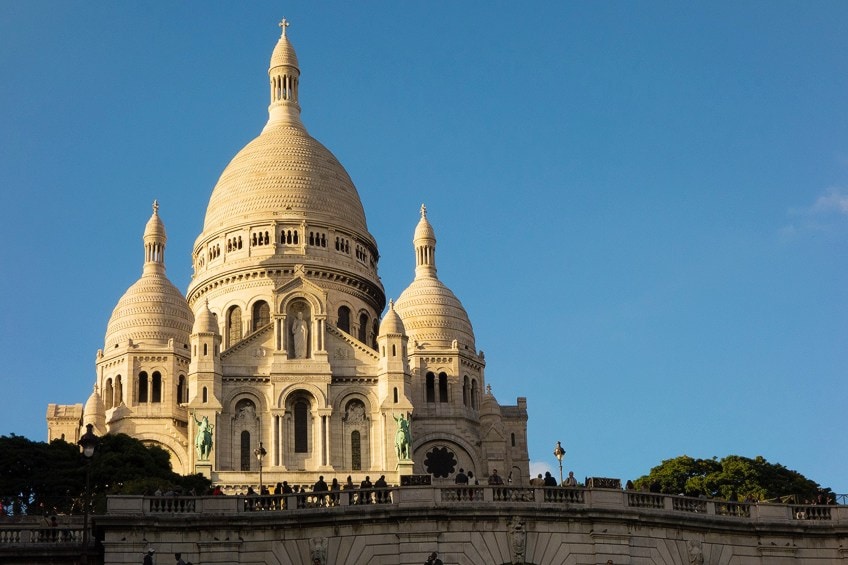
Forbidden City (Beijing, China)
| Date Completed | 1925 |
| Function | Palace |
| Architect | Kuai Xiang (1398 – 1481) |
| Location | Beijing, China |
The emperor was thought to be a son of Paradise in ancient times, and therefore Heaven’s highest authority was conferred to him. The emperor’s dwelling was erected facing north, as an earthly counterpart to the celestial Purple Palace, i.e., the North Star, but to house the Celestial Emperor.
It was obviously banned to regular people as a divine location, hence the moniker “Forbidden City”.
Emperor Yongle usurped his nephew’s throne. He chose to transfer the capital from Nanjing to Beijing in order to strengthen his imperial control and preserve his own security. As a result, Emperor Yongle commissioned Kuai Xiang to construct the Forbidden City in Beijing. There are a few side gardens to visit with intriguing halls.

Solomon R. Guggenheim Museum (New York, USA)
| Date Completed | 1937 |
| Function | Art museum |
| Architect | Frank Lloyd Wright (1867 – 1959) |
| Location | Manhattan, New York, United States |
The museum relocated from rented space to its current location in 1959, a major piece of twentieth-century architecture built by Frank Lloyd Wright. The cylindrical structure, which is broader at the top than at the bottom, was designed as a “chapel of the spirit.” Its one-of-a-kind ramp gallery rises from floor level in a long, uninterrupted spiral along the structure’s outside walls, ending just under the roof skylight. When a nearby tower was completed in 1992, the structure underwent substantial enlargement and modifications, as well as from 2005 to 2008. Rebay envisioned the room as a “temple of the soul,” allowing for a fresh perspective on the collection’s contemporary elements.
She informed Wright: “Every one of these great works should be arranged in space, and only you would investigate the prospects. I want a spiritual temple, a memorial!”
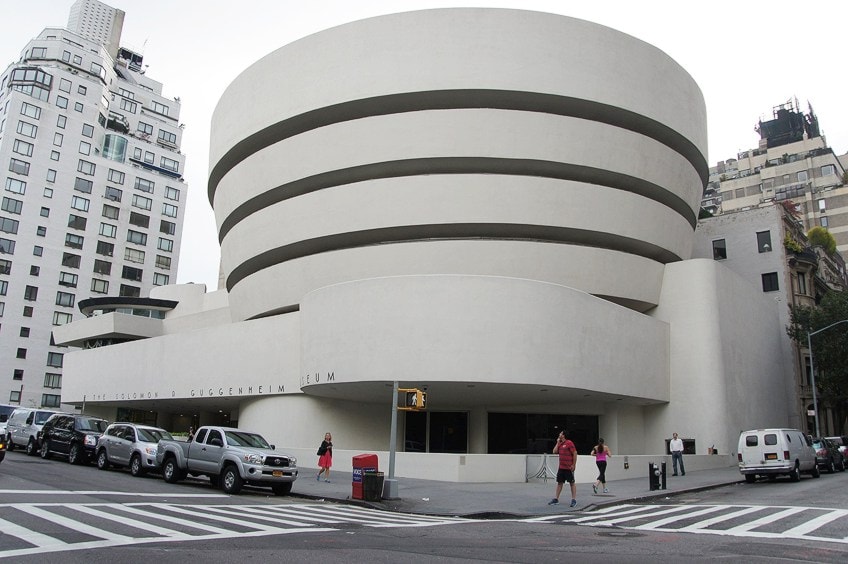
Lincoln Center (New York City, USA)
| Date Completed | 1956 |
| Function | Performing Arts Center |
| Architect | Frank Lloyd Wright (1867 – 1959) |
| Location | New York City, United States |
This famous structure is a sprawling arts complex in New York City that houses the city’s greatest performing arts venues as well as the city’s oldest and most renowned performing groups. Aside from an exceptional list of resident performance organizations, the center also has a specialized performing arts library as well as world-class dance and music training facilities. It was created and constructed in the 1950s with the goal of bringing together the greatest of New York’s resident performing organizations into one major performing arts complex.
In conjunction with the three theaters, the center houses a number of other notable venues and cultural institutes, and it serves as a benchmark for performing arts in the United States.

The Gateway Arch (Missouri, USA)
| Date Completed | 1965 |
| Function | Monument |
| Architect | Eero Saarinen (1910 – 1961) |
| Location | St. Louis, Missouri, United States |
The Gateway Arch National Park, established in 1935 to memorialize Thomas Jefferson’s vision of a transcontinental United States, runs from the Old Courthouse to the stairs facing the Mississippi River. The Gateway Arch stands tall in the middle, a dramatic testament to the adventurous spirit. Nowadays, the Gateway Arch honors the many people who helped define the area and the country. The Jefferson Memorial Association launched a design competition to choose the style of the new memorial. According to the contest’s call for suggestions, the new building was to function as a lasting testament to Jefferson’s “vision of greater prospects for men of all colors and different faiths.”
“The arch represented the entryway to the West, national progress, and other similar things,” Saarinen said of his creation.
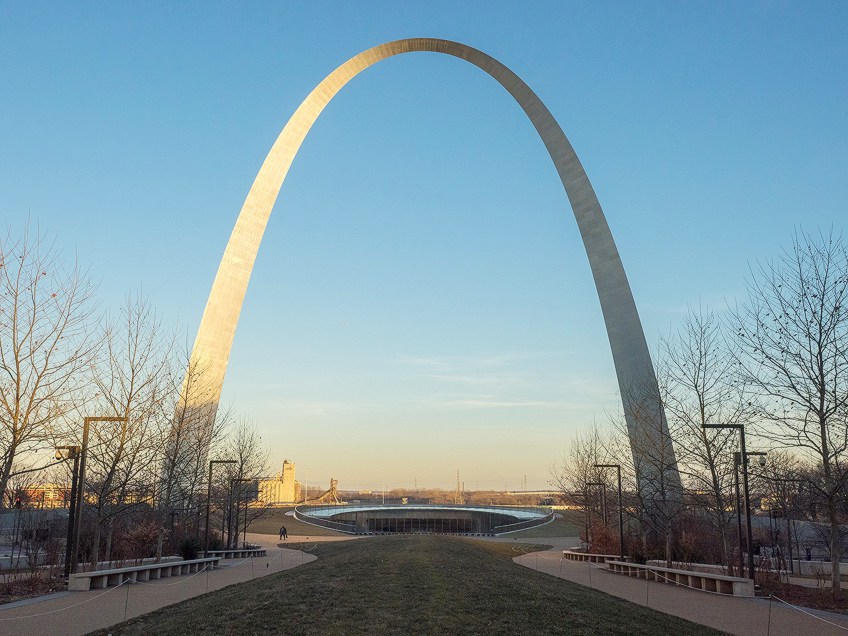
Metropolitan Cathedral of Brasília (Brasília, Brazil)
| Date Completed | 1970 |
| Function | Cathedral |
| Architect | Oscar Niemeyer (1907 – 2012) |
| Location | Brasília, Brazil |
With such a rich history, one would expect Brasilia’s architecture to represent the richness and significance of the society as a planned city. Because the church is so important in society, the design has to have meaning and individuality in comparison to its surroundings.
With the Cathedral of Brasilia’s powerful style and distinctive form, Oscar Niemeyer was sure to make an impression, which culminated in his acquisition of the Pritzker Prize in 1988.
The cornerstone was placed in early September 1958, when Oscar Niemeyer’s plans were being suggested and completely sketched out. The columns feature parabolic parts that reach up to the sky to depict two hands.
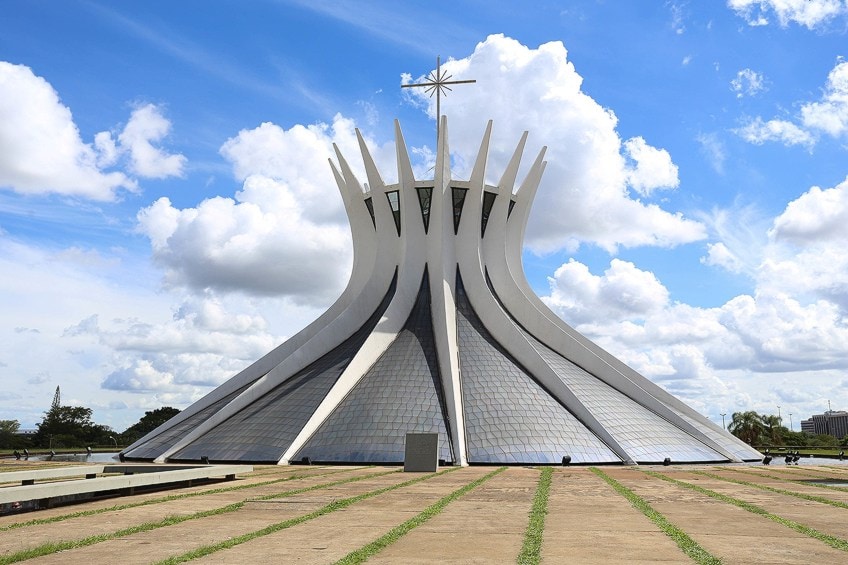
Le Centre Georges-Pompidou (Paris, France)
| Date Completed | 1977 |
| Function | Museum, library |
| Architect | Renzo Piano (1937 – present) |
| Location | Paris, France |
The mechanical, structural, and air-circulation components of the Pompidou Center are incorporated into the structure’s façade, earning it the moniker “inside out” building. The structure is well known for the huge tube known as the “caterpillar,” which runs diagonally across it. The French president originally declared in 1968 that a new free public library would be built on the Plateau Beaubourg. A year later, Georges Pompidou, the new French President, revealed plans for the Beaubourg project to contain a modern art museum, and that the new edifice would retain his name. Architects from all around the globe were invited to submit proposals for the new facility.
Because the façades of the towers are fully transparent, the highest levels of the skyscraper give amazing views of Paris.
Lotus Temple (New Delhi, India)
| Date Completed | 1986 |
| Function | Temple |
| Architect | Fariborz Sahba (1948 – present) |
| Location | Delhi, India |
The Lotus Temple, like all other Bahá’ Houses of Worship, is open to all, irrespective of faith or other qualification. According to the Faith, a Temple should be a place for people of all faiths to meet, contemplate, and worship.
As with other Bahá halls of worship, anybody can visit the Lotus Temple despite religious origin, gender, or other differences.
The holy scriptures of their faith, as well as other faiths, can be recited or sung in any language; however, reading nonscriptural literature, as well as presenting sermons or lectures, and fund-raising, are prohibited. Worship sessions have no established format, and traditional practices are not authorized.

Niterói Contemporary Art Museum (Rio de Janeiro, Brazil)
| Date Completed | 1996 |
| Function | Art museum |
| Architect | Oscar Niemeyer (1907 – 2012) |
| Location | Rio de Janeiro |
Oscar Niemeyer’s ability to generate symbols is undeniable; arguably the most notable instance is the Contemporary Art Museum of Niterói. The city of Niterói was a melancholy town, eclipsed by the renown and splendor of the lively neighboring metropolis.
However, once Niemeyer finished this museum, it has become a “mandatory” visit, and, like in Bilbao, what draws people is not just the exhibit but also the structure, whose drawing has become the city’s national logo.
This favorable influence earned Niemeyer additional local commissions, notably the Camino Niemeyer series of artistic and religious structures. The museum, according to its creator, emerges as a blossom from the rock that contains it. The interior rooms, which are exposed to spectacular vistas, were criticized because they relegated museum design techniques to the background, owing primarily to an abundance of natural light.
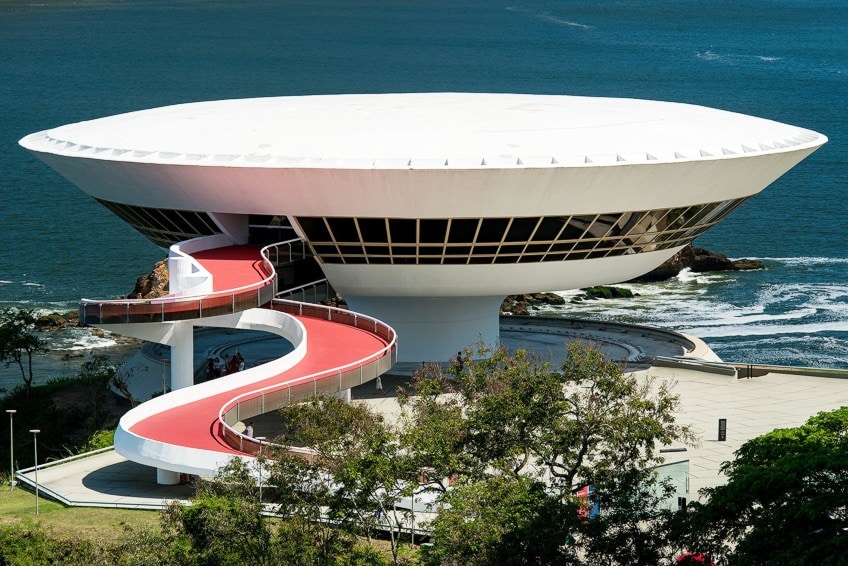
Dancing House (Prague, Czech Republic)
| Date Completed | 1996 |
| Function | Offices |
| Architect | Frank Gehry (1929 – Present) |
| Location | Prague, Czech Republic |
The Dancing House in Prague is the most well-known piece of contemporary architecture in the Czech Republic. Despite the fact that Prague is recognized for its magnificent historical center, which is full of breathtaking monuments and little snaky alleyways, the contemporary Dancing House is a favorite tourist and photographer destination due to its non-traditional architectural style. Dancing House, located on the banks of the Czech Republic’s longest river, the Vltava, embodies the Deconstructivism movement in the Czech Republic during the post-communist era.
Dancing House’s history began during the Second World War. There was once a normal structure with flats for people where Dancing House now stands, but it was mistakenly demolished by American air bombs during the war.
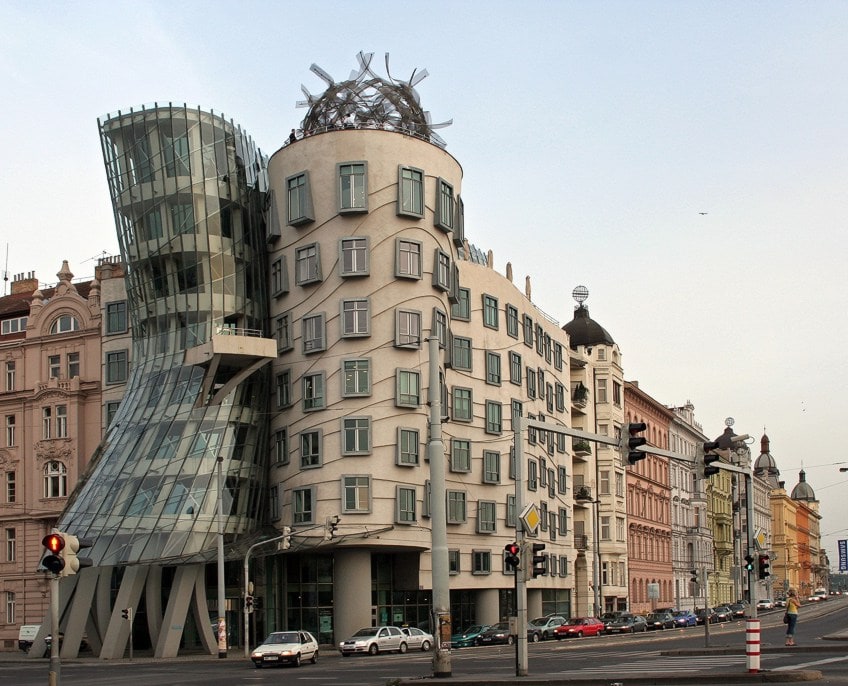
Dresden Frauenkirche (Dresden, Germany)
| Date Completed | 2005 |
| Function | Church |
| Architect | George Bähr (1666 – 1738) |
| Location | Dresden, Germany |
The church is one of the world’s finest examples of Protestant holy architecture. During World War II, allied airstrikes utterly destroyed this explicit masterpiece. The church remained in ruins for a long time before being rebuilt as a war memorial. Later, the components were stored in preparation for rebuilding. The rebuilding of the structure was finished in 2005. As a sign of reconciliation, the orb above and the new golden cross were made in London. The ancient, damaged cross may still be found at the rebuilt altar of the church. Its rebuilding represents worldwide reconciliation following World War II.
The bulk of the building, such as the façade, the dome, and the interior, was built with authentic materials.
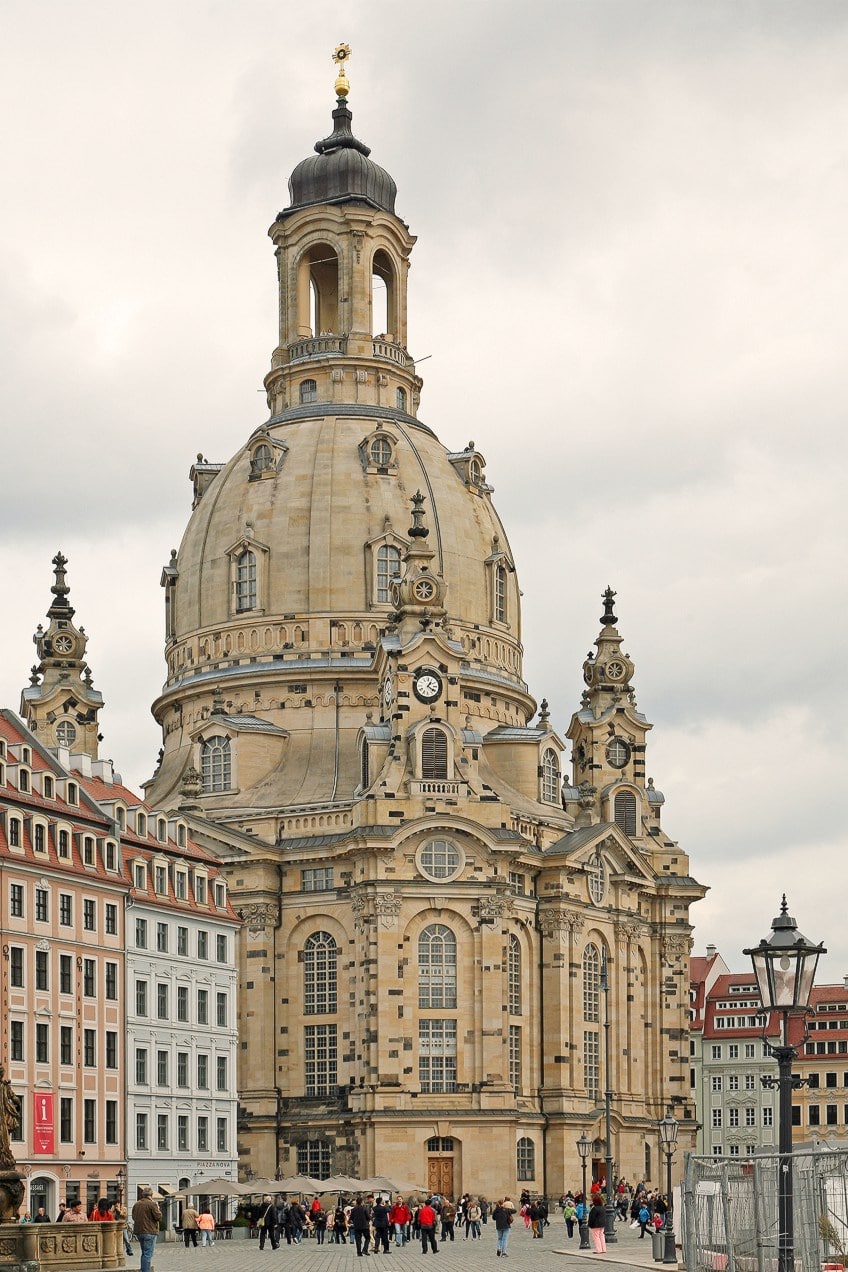
The Shard (London, UK)
| Date Completed | 2013 |
| Function | Skyscraper |
| Architect | Renzo Piano (1937 – present) |
| Location | London, UK |
Piano saw the tower’s thin, spire-like form as a good addition to the London skyline, reminiscent of the church steeples seen in old engravings of the city, and thought that its presence would be considerably more subtle than critics of the project claimed.
He proposed a complex use of glazing, with dramatic façades of angled glass panes meant to mirror sunlight and the sky above, so that the building’s look changes with the weather and seasons.
Some ground-breaking engineering approaches were utilized in the skyscraper’s construction. The Shard was built with the conservation of energy in mind. It has a combined power and heating plant that runs on natural gas from the National Grid.
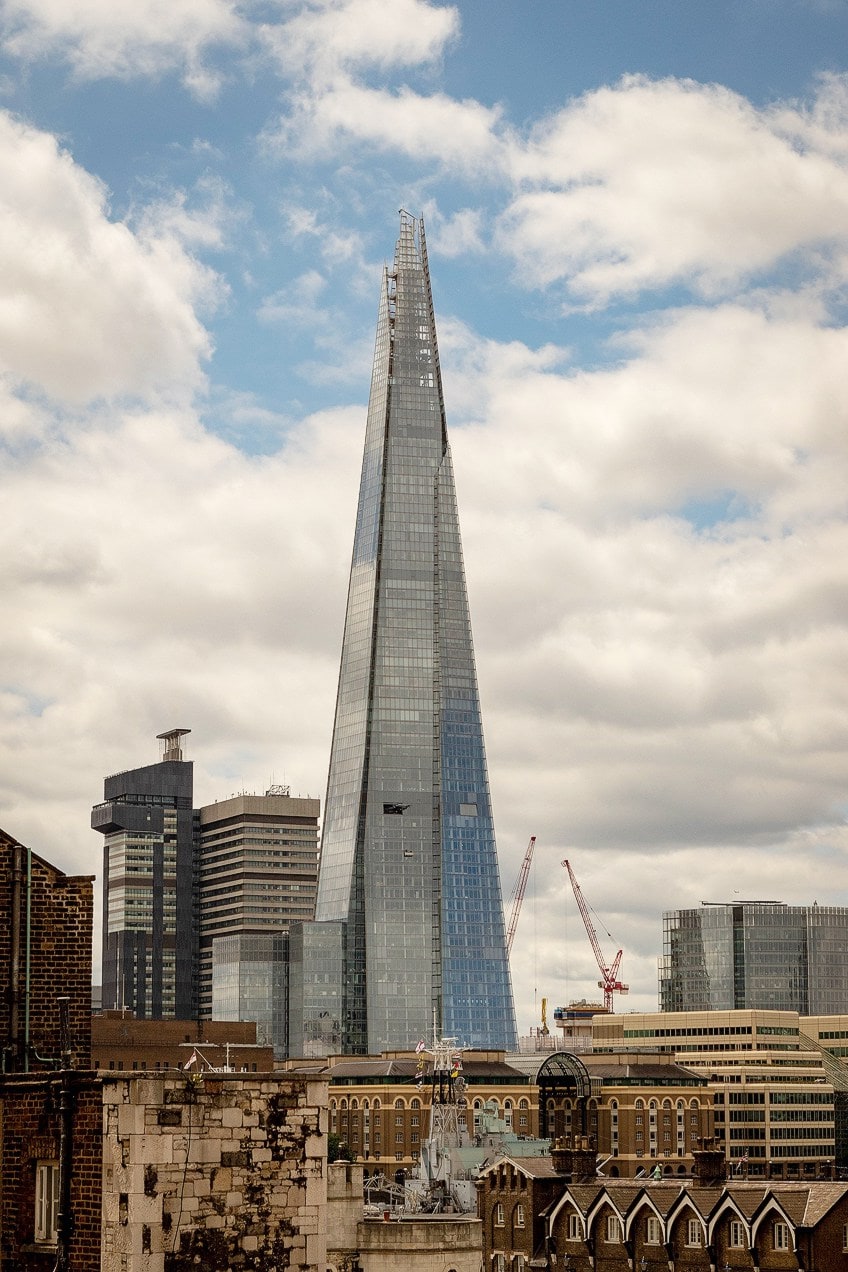
What did you think of our list of the most iconic buildings and famous structures in the world? These are great examples of the most significant architecture that the world has to offer. We hope our list of the most famous buildings in the world introduced you to some structures you had not heard of before.
Frequently Asked Questions
What Makes a Building Famous?
Iconic buildings usually become well-known for a number of reasons. Sometimes, it is just purely because of their aesthetic appeal and architectural magnificence. Other times, there may be some historical significance to the site or building.
What Is Regarded as the Most Famous Building?
There are several answers to this question. This may depend on who you ask and for what reason you think it is famous. Many regard anything from the White House to the Taj Mahal as being the most famous.
Justin van Huyssteen is a freelance writer, novelist, and academic originally from Cape Town, South Africa. At present, he has a bachelor’s degree in English and literary theory and an honor’s degree in literary theory. He is currently working towards his master’s degree in literary theory with a focus on animal studies, critical theory, and semiotics within literature. As a novelist and freelancer, he often writes under the pen name L.C. Lupus.
Justin’s preferred literary movements include modern and postmodern literature with literary fiction and genre fiction like sci-fi, post-apocalyptic, and horror being of particular interest. His academia extends to his interest in prose and narratology. He enjoys analyzing a variety of mediums through a literary lens, such as graphic novels, film, and video games.
Justin is working for artincontext.org as an author and content writer since 2022. He is responsible for all blog posts about architecture, literature and poetry.
Learn more about Justin van Huyssteen and the Art in Context Team.
Cite this Article
Justin, van Huyssteen, “Famous Buildings – Looking at the World’s Most Iconic Buildings.” Art in Context. May 30, 2022. URL: https://artincontext.org/famous-buildings/
van Huyssteen, J. (2022, 30 May). Famous Buildings – Looking at the World’s Most Iconic Buildings. Art in Context. https://artincontext.org/famous-buildings/
van Huyssteen, Justin. “Famous Buildings – Looking at the World’s Most Iconic Buildings.” Art in Context, May 30, 2022. https://artincontext.org/famous-buildings/.





